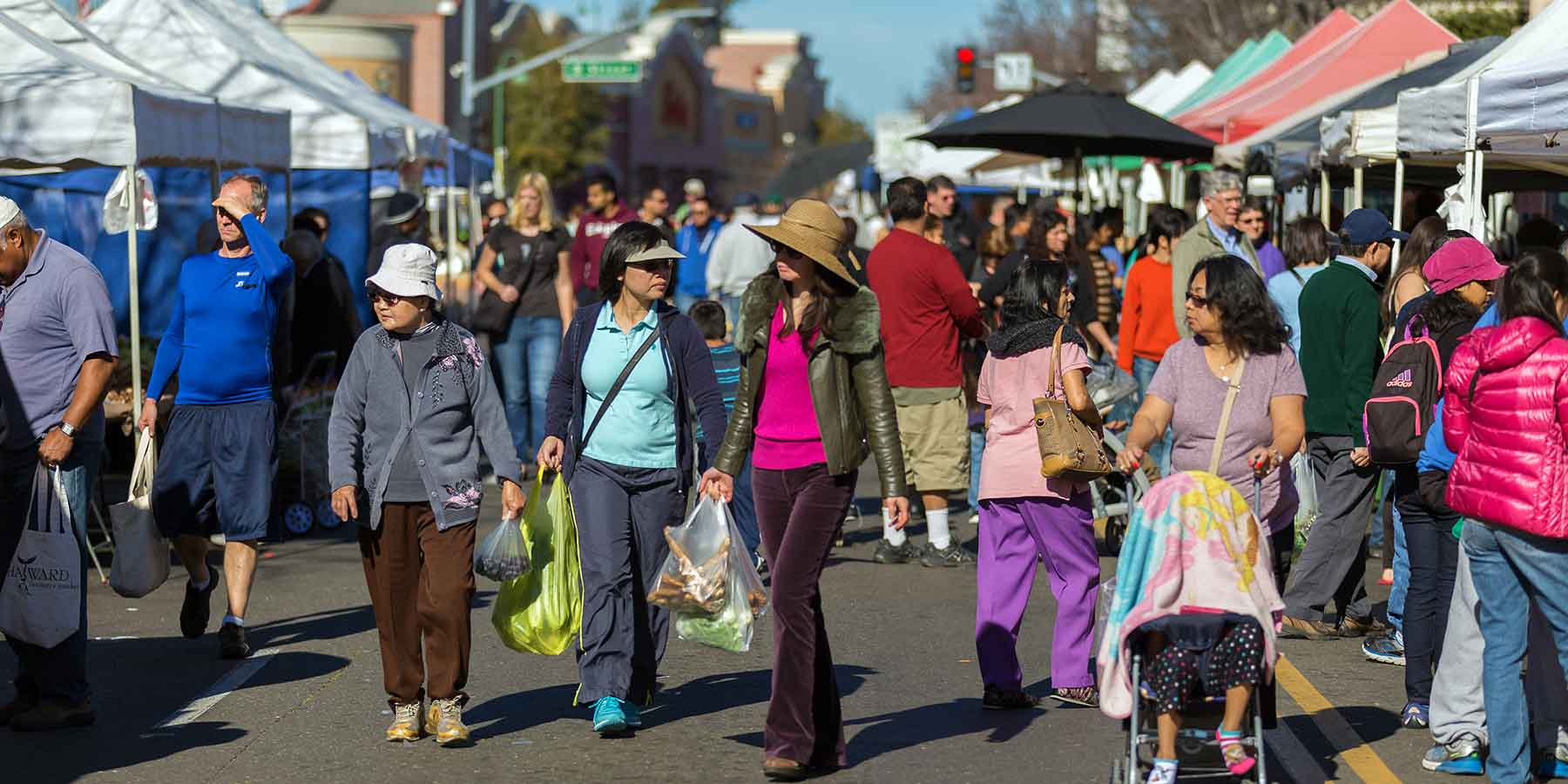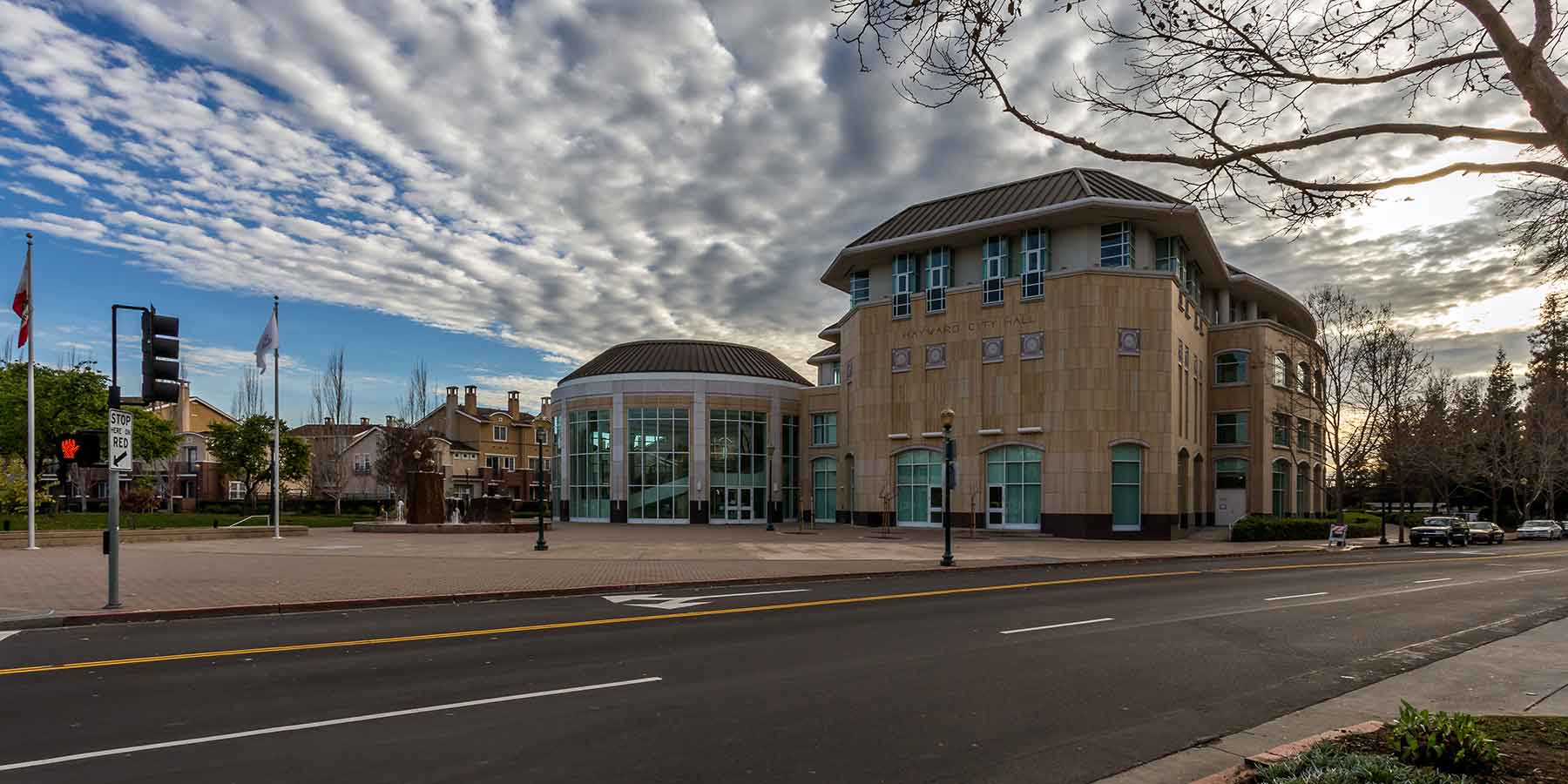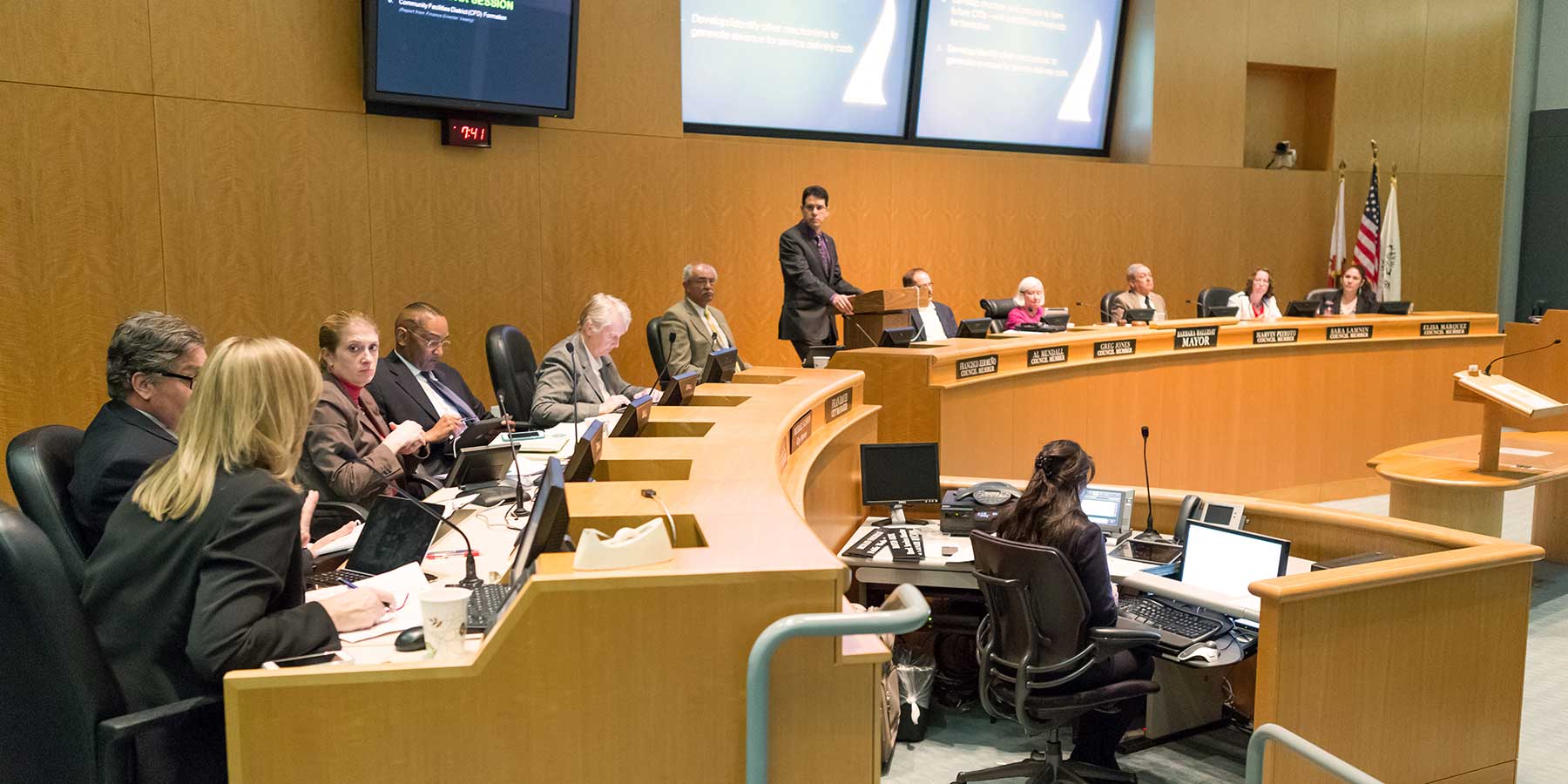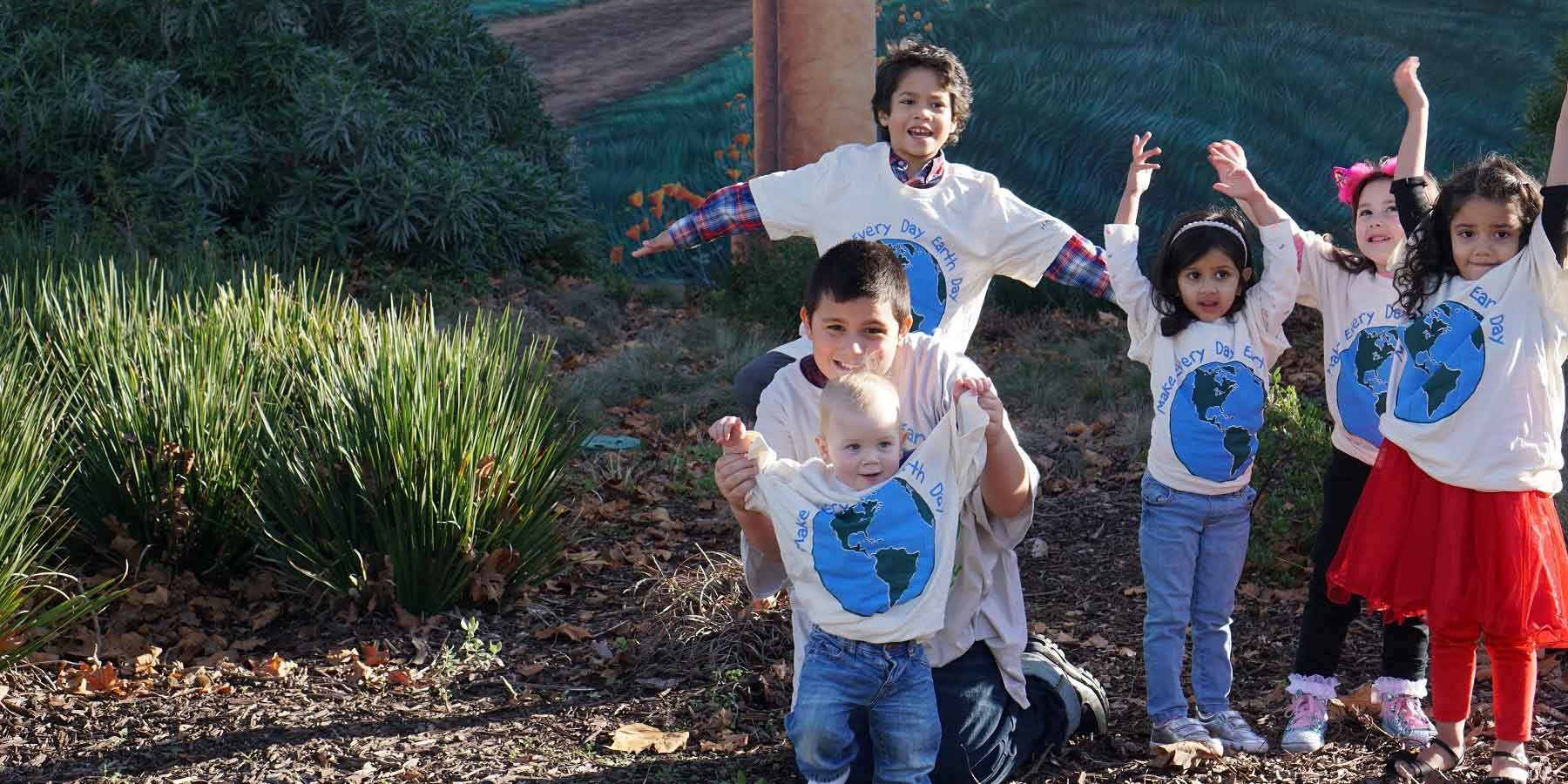Equity & Outreach
Climate Equity
Community members experience disproportionate impacts from climate change due to existing vulnerabilities, historical patterns of inequity, systemic environmental injustices, socioeconomic disparities, and historical patterns of inequity. Hayward is committed to developing and implementing equitable solutions to mitigate climate change. This includes efforts to create access to municipal services, public amenities and infrastructure, healthy environmental, and economic prosperity for all City residents and to protect all residents against the impacts of climate change and improve the quality of life for the most vulnerable members of the community. Disadvantaged communities have been marginalized and overburdened by environmental pollution exposure, underinvestment in clean energy infrastructure and programs, and lack of access to sustainable and decarbonized housing and transportation. Equitable climate action planning efforts strive to ensure that economic, health, and social benefits of climate action planning programs, projects, and infrastructure are accessible to individuals across a community, regardless of ethnicity, socioeconomic status, health, age, and physical ability.
Equitable Engagement Approach
As part of various planning efforts, including this Climate Action Plan, the Hayward General Plan Hazards Element, the Hayward General Plan Housing Element, and the Hayward General Plan Environmental Justice Element, the City conducted a series of public outreach efforts centered around equitable engagement.
Engagement Objectives
The CAP project team made significant efforts to communicate with and obtain input from community members. To facilitate this, the City developed a set of engagement objectives to guide the engagement process:
- To educate the community and decisionmakers on the legal requirements, timelines, and process for the various planning efforts and allow for a fully transparent updates process.
- To educate the community and decisionmakers about historical inequities in housing policy, development, and practices.
- To involve, collaborate and empower the community to act through this process.
- To implement a racial equity lens throughout the earliest phases to ensure that City staff and Rincon Consultants engage with all segments of the community.
- To emphasize engagement with hard‐to‐reach communities and those that have not yet established trust with the City or do not typically engage in City processes by partnering with trusted community groups and advisors.
- To engage groups including but not limited to special needs populations, communities of color, lower-income communities, communities that have limited or no access to technology, elderly communities, youth communities, and others.
- To define equity goals and guardrails for use in developing policy.
- To develop and execute a creative and innovative outreach process rather than repeating common approaches to engagement.
Engagement Methods & Events
As part of this CAP Update process, the City utilized a multi-pronged approach engagement strategy to engage with Hayward residents, businesses, organizations, and stakeholders. The City employed multiple engagement approaches, including:
- Public workshops
- Gallery Walks
- Website with Story Map
- Focus groups
- Online Surveys
- Tabling at community events
- Presentations for community groups
- Chabot College student interviews.
- Flyering around Hayward
This section identifies the various engagement methods the City employes to effectively engage community members, particularly Hayward’s disadvantaged communities.
Public Workshops & Gallery Walks
Table 8 below shows the key engagement efforts and community input that was considered during the development of the CAP Update. Public input will continue to be received throughout the public draft comment period and through a third public workshop.
Table 8: CAP Engagement Summary
ENGAGEMENT EVENT | DATE OF EVENT | OBJECTIVES |
|---|---|---|
| Gallery Walks | January 2022 | • Build early awareness of the CAP process. • Gather high-level ideas, priorities, and concerns. • Build relationships with key stakeholder groups. Hosted at City Hall, Library, Chabot College, Hayward South Alameda County National Association for the Advancement of Colored People (NAACP), AC Transit. |
| Flyering | February 2022 | • Build early awareness of the CAP process. • City staff flyered (English and Spanish) at: Hayward BART stop, Downtown Hayward Farmers Market, laundromats, grocery stores. |
| Public Workshop #1 | April 13, 2022 | • Build early awareness of the CAP goals and process among the general public. • Gather high-level priorities, and concerns about climate action in Hayward. • Gather initial ideas for potential actions to include in the CAP. |
| Tabling | April-August 2022 | • Build early awareness of the CAP process. • Gather feedback on the draft mitigation measures. • Hosted tables at: City of Hayward’s Annual Earth Day Event, Juneteenth, Community Family Fair at Tennyson Park, August Downtown Street Party, Mariachi Festival. |
| Presentations | May 2022 | • Build early awareness of the CAP process. • Present the draft mitigation measures. Gather feedback on the draft mitigation measures. • Met with: Eden Housing staff, Sierra Club Southern Alameda County Group, Save the Bay staff, Starr King Unitarian Universalist Church. |
| Chabot College Partnership | June-August 2022 | • Chabot students interviewed 252 residents about climate change and draft mitigation measures. |
| Online Survey | June-August 2022 | • Gather feedback on the draft mitigation measures. |
| Focus Groups | May-Juy 2022 | • Build early awareness of the CAP process. Present the draft mitigation measures. • Gather feedback on the draft mitigation measures. • Hosted at Tennyson High School, Eden Housing Alta Mira, Eden Housing Tennyson Gardens, Eden Housing Montgomery Plaza, and Eden Housing Hayward Senior Facility. |
| Public Workshop #2 | July 19, 2022 | • Provide updates about the Hayward CAP’s emission forecasts and GHG reduction targets. • Present the draft mitigation measures. • Gather feedback about the draft mitigation measures. |
| Public workshop #3 | TBD | • Public review of the draft CAP document and to provide input. |
Website with Story Map
As part of the Hayward General Plan Housing Element, Hazards Element, and Environmental Justice Elements as well as this Climate Action Plan, the City created and hosted a website to serve as a centralized information hub and platform to collect input. The website includes a CAP Story Map with information on the CAP goals, benefits of the CAP, the CAP scope, and the City’s climate action planning steps. The Hayward Housing and Climate Update website is located here: https://haywardhousingandclimateupdate.com/
Equitable Climate Action Planning
CAP measures require changes in the way members of the community operate their homes and businesses, mobilize throughout the community, utilize water, dispose of waste, and consume products. As such, much of the costs and impacts related to climate change are carried by the community. Therefore, it is imperative that the CAP measures are developed with equity as a central pillar of the measure development process.
Climate equity requires local leaders and policy developers to acknowledge that disadvantaged communities are knowledgeable in creating solutions to protect and preserve their air, water, land, and communities, despite their previous exclusion from decision-making and from public resources and services. Therefore, it is critical that disadvantaged communities are involved in the policy development process so that policies reflect and align with the concerns and needs of these communities.
Disadvantaged communities are those that experience continuing injustice and face a legacy of systemic, largely racialized, inequity that influences their living and working places, the quality of their air and water, and their economic opportunities. Disadvantaged communities in Hayward include People of Color, Immigrants, People with Lower Incomes, People Experiencing Houselessness, Individuals with Physical Disabilities, Seniors, Linguistically Isolated (Limited or Non- English Speakers).
Hayward Equity Guardrails
Disadvantaged communities in Hayward have previously and continue to face systemic discriminatory practices that perpetuate systems of inequitable power and resource distribution. GHG reduction measures included in the CAP Update, as seen in Section 6, are intended to help address systemic discrimination and create a sustainable and equitable path forward for disadvantaged communities. Equity guardrails, as seen in the table below, were developed in coordination with City staff to provide specific criteria that GHG reduction measures proposed for the CAP Update need to include to address equity concerns specific to Hayward.
Table 9: Hayward Equity Guardrails
EQUITY GUARDRAILS | DESCRIPTION |
|---|---|
| Integrate Health & Safety | Provide access to health, safety, and comfort benefits associated with the CAP by prioritizing access for disadvantaged communities. |
| Provide Economic Support | Establish funding and financing opportunities that are designed for and can be accessed by disadvantaged communities and that additional financial burdens on these groups are avoided. |
| Provide Social & Cultural Support | Provide meaningful support for disadvantaged communities through the addition/expansion of programs in partnership with community-based organizations that educate, engage, provide resources, and respond to barriers. |
| Mitigate Displacement Potential | Protect disadvantaged communities from displacement and increased cost of living. |
| Continue Investment & Engagement | Include specific mechanisms for continued investment in and engagement with disadvantaged communities throughout implementation of the CAP (unforeseen equity barriers may arise as the CAP is implemented and may need to be addressed through policy changes or additional support programs). |
The Hayward equity guardrails were used to analyze each of the GHG reduction measures proposed for the CAP to generate a list of concerns and potential solutions. Potential solutions and supportive actions specific to equity were developed to address the equity concerns identified and are included under the relevant GHG reduction measures.








